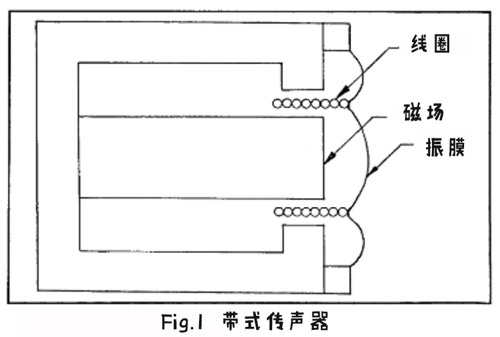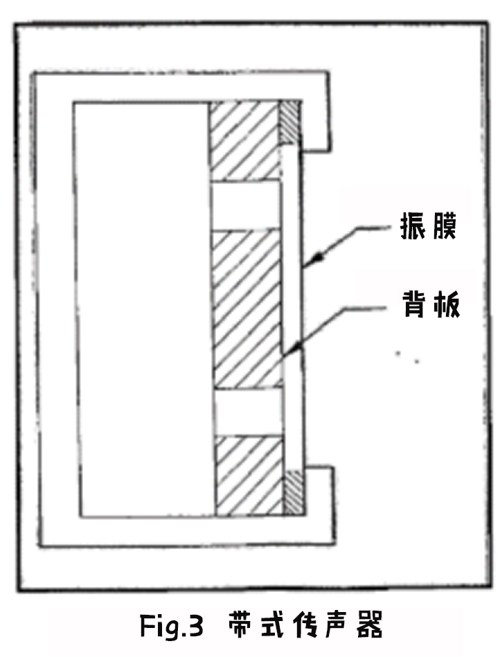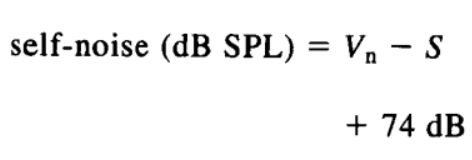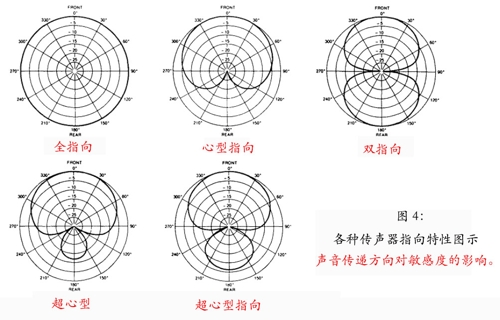Choosing the right microphone for a specific application can be quite challenging. Should you go with a condenser microphone or a dynamic one? What about omnidirectional versus cardioid pickup patterns, or a flat frequency response versus a tailored one? This article delves into the pros and cons of different microphone types and how they fit various scenarios. Understanding these factors will help you make an informed decision when selecting a microphone. Ideally, there would be a universal microphone suitable for all situations. However, such a device doesn’t exist because each application has unique requirements. While a perfect power amplifier might have linear transmission characteristics, microphones are usually optimized for specific uses, leading to varied frequency responses. For example, classical music engineers often prefer microphones with a flat frequency response to capture every nuance accurately. In contrast, pop music producers might opt for a microphone that emphasizes high frequencies to achieve a more powerful sound. In classical music recording, a 41 Hz signal is considered part of the musical spectrum, but for voice broadcasts, it’s typically seen as noise. Hence, microphones used in classical settings are designed with good low-frequency response, while those for speech applications feature a low-frequency roll-off. On stage, singers often use microphones that enhance low frequencies to create a warmer, more powerful sound. However, using the same type of microphone in a studio without equalization could result in muddier instrument sounds. Additionally, microphones come with various directional characteristics suited for different needs. Omnidirectional mics pick up sound from all directions, making them ideal for capturing room reverb. Cardioid mics, on the other hand, reduce background noise and are better suited for live recordings where external interference is a concern. These design choices make microphone selection both interesting and complex. Essential Characteristics of All Microphones While different microphones may have varying frequency and directional responses, they all share some common traits: Other features like size, directivity, durability, and cost may also matter depending on the application. However, achieving all these attributes in one microphone is nearly impossible due to inherent trade-offs. For instance, a larger grille might reduce pop noise but increase the microphone's size. Similarly, adding built-in attenuation can lower the signal-to-noise ratio. In most cases, design decisions involve compromises. Enhancing one aspect often limits another. The goal of this article is to explain these trade-offs so users can make better choices based on their specific needs. The Trade-Offs in Microphone Design A moving coil microphone (commonly referred to as a dynamic mic) works by suspending a coil connected to the diaphragm within a magnetic field. When sound waves vibrate the diaphragm, the coil moves within the magnetic field, producing an electrical signal that mirrors the input sound wave. Ribbon microphones, shown in Figure 2, use a thin metal foil suspended in a magnetic field. Sound waves cause the metal piece to vibrate, generating an electrical signal. Condenser microphones, as shown in Figure 3, consist of a conductive diaphragm and a backplate forming a capacitor. When sound waves vibrate the diaphragm, the distance between it and the backplate changes, altering the capacitance and producing an electrical signal similar to the original sound. The diaphragm and backplate can be powered externally or by an insulator embedded in the diaphragm or backplate. Condenser microphones are ideal for the following applications: Dynamic microphones are better suited for: Ribbon microphones are best for: Note that the performance traits mentioned above are general trends. Some dynamic mics have smooth frequency responses or high sensitivity, and some condensers are durable and have good dynamic range. The recommendations here are based on typical characteristics of each type. Frequency Response of Different Transducers In the chart below, the left column shows the diaphragm velocity (solid line) corresponding to frequency for the four transducers, or the diaphragm displacement (dashed line) at different frequencies. The middle column illustrates the relationship between pressure gradient (difference in acoustic pressure at the front and rear ends of the diaphragm) and diaphragm vibration. For omnidirectional mics, the rear end of the diaphragm is sealed, so the pressure difference remains constant. For cardioid or bidirectional mics, the rear end is exposed to sound waves, causing the pressure difference to increase with frequency. The right column shows the result of adding diaphragm velocity and pressure gradient (for dynamic mics) or diaphragm displacement and pressure gradient (for condensers). This combined result represents the microphone's amplitude/frequency response. Figure A shows an omnidirectional moving coil transducer. It is damped at intermediate frequency resonance, keeping the relationship between diaphragm speed and frequency relatively constant. The output voltage is proportional to the diaphragm speed. Since the rear end is in a sealed space, the pressure step and frequency change remain constant, resulting in a flat response over most audio frequencies. Figure A Figure B shows an omnidirectional condenser transducer. It is damped at high-frequency resonance. The diaphragm speed increases by 6 dB per octave, maintaining a constant relationship between diaphragm displacement and frequency. The output voltage is proportional to the displacement. The pressure step and frequency change remain constant, resulting in a flat frequency response over most of the audio range. Figure B Figure C shows a cardioid moving coil transducer. It is damped at low-frequency resonance, and the diaphragm speed decreases by 6 dB per octave over most frequencies. The output voltage is proportional to the diaphragm speed. However, since the pressure step increases by 6 dB per octave in mid-high frequencies, a flat frequency response is maintained. Figure C Figure D shows a cardioid condenser transducer. It is damped at intermediate frequency resonance. The relationship between diaphragm speed and frequency remains constant, and the diaphragm displacement decreases by 6 dB per octave over most frequencies. The output voltage is proportional to the displacement. However, since the pressure step increases by 6 dB per octave over most frequencies, a flat frequency response is still achieved. Figure D Advantages and Disadvantages of Different Microphones Let’s examine the performance of microphones in several aspects and look at the advantages and disadvantages of different types in each tested area. Transient Response – Due to their small diaphragm mass and high damping, condenser microphones respond faster to transients than dynamic mics. With a high-performance condenser mic, you can hear the “click†when tapping a cymbal or the pluck when playing a guitar chord. Capacitive mics provide clear, detailed sound, making them ideal for cymbals, snares, acoustic instruments, and vocal recordings. Generally, dynamic mics have weaker transient response compared to condensers. Therefore, they are used in applications where it’s necessary to “soften†overly detailed sounds. Frequency Response – Condenser mics typically offer a smoother frequency response due to their simpler transducer design. Similarly, due to the simple structure, the band-free mic’s peak-free frequency response makes it widely acclaimed. Additionally, the corrugated metal foil diaphragm of ribbon mics is designed to reduce the chance of breakage. In contrast, dynamic mics generally have a less flat frequency response than condensers or ribbons, except for some excellent models. The transducer structure of dynamic mics includes a coil that can detach from the diaphragm piston mechanism or move back and forth. This structural characteristic causes the frequency response of dynamic mics to have peaks. Additionally, since the coil acoustically divides the diaphragm mechanism into two acoustic cavities, it resonates with the magnetic gap inertia, causing abnormal frequency response. Diaphragms of condensers and ribbons are also separable, but generally have a lower impact on the frequency response. Due to the small diaphragm mass, condenser mics typically provide better high-frequency response than ribbon or dynamic mics. Although the diaphragm mass of ribbon mics is small, the acoustic phase interference between the front and rear ends of the diaphragm causes an offset in the high-frequency region. This is because the wavelength of the high-frequency part is very short, and the signals on both sides of the ribbon diaphragm may have opposite polarities, leading to acoustic cancellation. This issue does not occur in condensers or dynamic mics due to structural design. The high-frequency energy behind the diaphragm is either attenuated by the microphone housing (omnidirectional mic) or eliminated by the acoustic phase-shifting network (cardioid mic). The high-frequency response of dynamic mics can be extended using a Helmholtz resonator placed in front of the diaphragm. The Helmholtz resonator is a small air chamber with one or more acoustic wave inlets. The resonance generated in the high-frequency part can improve the high-frequency response of the dynamic mic. However, this design still has some limitations, and attenuation and a higher degree of phase shift occur in the frequency band above the resonator’s resonance point. Helmholtz resonators are also commonly used in condenser mic designs, but the required high-frequency energy boost is generally less than that of dynamic mics. Sensitivity – Generally, condenser mics have the highest sensitivity, followed by dynamic mics, while ribbon mics have the lowest. Here are typical open-circuit sensitivity parameters for these three types: The reason condenser mics have higher sensitivity than dynamic mics is that their transducer design is more efficient, and they come with an internal preamp for higher gain. where: The higher the voltage, the higher the sensitivity. However, an excessively high voltage causes the diaphragm to be adsorbed on the back electrode due to electrostatic repulsion, which hinders the vibration of the diaphragm. The greater the change in capacitance, the greater the voltage change (that is, the greater the output signal voltage). The larger the area of the diaphragm or the smaller the distance between the diaphragm and the back electrode, the greater the change in capacitance. Unfortunately, large-diameter diaphragms are susceptible to acoustic staining in the off-axis direction due to diffraction and other factors; reducing the distance between the diaphragm and the back electrode is very difficult and expensive, requiring careful avoidance during assembly. Dust particles entering the cavity between the diaphragm and the back electrode can also cause issues. Therefore, manufacturers must find an appropriate compromise solution. To achieve sufficient sensitivity, dynamic mics also need to find solutions from this design. The output voltage formula for a dynamic mic is as follows: where: The higher the magnetic flux density, the higher the number of turns of the coil and the higher the output voltage. However, an oversized magnet may acoustically affect the frequency response characteristics and also increase the size and weight of the mic. Similarly, too many turns of the coil will increase the quality of the moving coil mechanism, resulting in degradation of the mic's response to high frequencies. If a higher magnetic flux density is obtained by reducing the magnetic gap, it is difficult to ensure that the coil does not rub against the magnetic pole. It is worth mentioning that new magnet materials such as samarium-cobalt magnets can produce higher magnetic flux densities in smaller volumes. The reason ribbon mics have lower sensitivity than dynamic mics is that they only have one low-impedance conductor (the ribbon metal foil) to generate an electrical signal, and a large-sized magnet and booster are required to increase the output voltage. Additionally, the strip-shaped metal foil is driven by the differential pressure (pressure step) on both sides of the diaphragm, which is even smaller than the single-point design of the dynamic mic for the bidirectional ribbon mic design. Size – Condenser mics can be much smaller than dynamic mics. Dynamic mics require a certain volume of magnets and voice coils to provide sufficient output voltage, but even condenser mics with a diaphragm area of less than 1 cm² provide sufficient output voltage. Maximum Sound Pressure Level – A well-designed dynamic mic can withstand very large sound pressures without excessive distortion at the output. Even a very high sound pressure will only cause a slight vibration of the diaphragm. However, the electrical components used in condenser mics are susceptible to overload due to electrical signals generated by the transducer. If an attenuator is inserted between the transducer and the electrical component to avoid overload (for example, to increase the maximum sound pressure level), the signal-to-noise ratio will decrease accordingly. If the dynamic headroom of the mic's electrical components is maximized, it usually costs more current and results in a higher noise floor. The transducer manufacturer must consider all these influencing factors and determine the appropriate design for the application. Noise Floor – Since no components require an external power supply, the noise floor of dynamic mics is much lower compared to condenser mics. The open circuit noise voltage generated by a dynamic mic can be calculated using the following formula: where: The higher the mic's output impedance (measured at a particular frequency, measured at the mic connection terminal), the greater its noise floor. The noise floor can be calculated using the following equation: where: For example, if a mic has a noise signal voltage of -133 dBV and a sensitivity of -75 dBV/μbar, its noise floor is 16 dB SPL. This value is calculated based on unweighted measurements. If A-weighting is required, it needs to be measured by a weighted network simulating the human ear frequency response curve (rolling down at frequencies below 1 kHz). The value calculated from the A-weighted measurement is closer to what the human ear perceives. A condenser mic with a very low noise floor is 14 dBA. A condenser mic is generally considered excellent if it has a noise floor of less than 20 dBA; if it is below 30 dBA, it is generally considered a good performance condenser mic. Power System Requirements – Condenser mics require an external power supply system, such as a battery or phantom power. Phantom power is 12–48 V DC transmitted through pin 2 and pin 3 of the mic connector. The mic uses the same two wires to receive phantom power and send audio signals. Many consoles support phantom power to the mic through their signal input connectors. Users just need to connect the mic to the mixer's input port to obtain phantom power. In contrast, dynamic mics do not require any power supply system to operate, so they are more reliable. Balanced and Durable – A well-designed dynamic mic is generally very durable and performs well under harsh conditions. Some modern condenser mics also have the same durability, although their complex electrical components may look fragile. On the contrary, the ribbon diaphragm is very fragile, and strong wind or bad habits may cause the diaphragm to deform. High temperatures and humidity can damage electrets, but have little effect on moving coil transducers. Excessive humidity can cause the narrow space between the condenser mic's diaphragm and backplate to fill with moisture, causing the transducer to fail. For a moving coil transducer, the gap between the coil and magnet is large, so the influence is less in high humidity environments. Directional Characteristics Different directional characteristics (pickup patterns) also have their own advantages and disadvantages. Before going further, let's review the common microphone directional characteristics. Overview of Directional Characteristics An omnidirectional mic has the same sensitivity for sounds coming from all directions; a cardioid mic is only sensitive to sounds coming from one direction (sounds from the front of the mic and sounds from the side or back have low sensitivity); a bidirectional mic is most sensitive to sounds coming from both directions—front and back—but attenuates sounds from the side. Figure 4 shows the different types of microphone directional characteristics. Figure 4 A cardioid can be subdivided into three subtypes: heart, supercardioid, and hypercardioid. The cardioid mic is more sensitive to sound in the wider front range, with a 6 dB sensitivity drop on the sides and 15–25 dB on the rear. The supercardioid mic attenuates lateral sound waves by 8.7 dB and has two zero pickup areas in the 125-degree axial region. The hypercardioid mic attenuates lateral sound waves by 12 dB and has two zero pickup areas in the 110-degree axial region. Because they isolate sound waves from the rear and side, cardioid and bidirectional mics help users eliminate unwanted sounds such as room reflections, feedback, or sound leaks (from other instruments located in the off-axis area of the mic). These mics maintain good acoustic isolation or separation between sound tracks. After attaching a slotted tube (wave interference tube) to the front end of the acoustic cavity of a hypercardioid mic, it becomes a super-directional mic, such as a gun mic or a line array mic. These mics are commonly used for long-distance pickup of speech signals during film production, TV production, and news interviews. Proximity Effect When the distance from the sound source is very close, most cardioid and bidirectional mics will have a low-frequency partial boost. The most common is that when a singer sings close to the mic, the sound becomes more generous. This phenomenon, where the low-frequency portion is improved due to the proximity of the sound source, is called the near-talk effect. This phenomenon usually occurs on cardioid mics. The diaphragm of this type of mic has a fixed distance from the front and rear sonic inlets. The near-talk effect can make the drum sound warmer and fuller. However, in most recording applications, the near-talk effect can cause the sound or vocals of the instrument to be too muddy and unnatural. To reduce the impact of the near-talk effect, some specially designed dual-diaphragm mics have started to appear; other types of mics use the built-in low-frequency roll-off switch to compensate for low-frequency boosting. Of course, users can also use the equalizer on the mixer to attenuate too much low-frequency energy, and also attenuate the low-frequency energy in the sound leakage picked up by the mic. Choose the Most Appropriate Directional Feature Some features of omnidirectional mics make them ideal for certain applications. In the following applications, using an omnidirectional mic is a good choice: In the following applications, using a cardioid mic is a good choice: In the following applications, using a supercardioid mic is a good choice: In the following applications, using a hypercardioid mic is a good choice: In the following applications, using a bidirectional mic is a good choice: In the following applications, using a gun mic is a better choice: It should be noted that both condenser and dynamic mics can be designed to have any directional characteristics (except for the bidirectional dynamic design). Ribbon mics are either a bidirectional design or a hypercardioid directional design. Figure 5 is a table of microphone classifications based on transducer type and directional characteristics. How Directional Characteristics Are Formed Different vents, air tubes, and damping materials are placed behind the mic diaphragm, allowing the mic to respond to sounds from different directions. An omnidirectional mic (condenser or dynamic) is designed to be open only at the front end of the diaphragm, so the diaphragm responds only to pressure from the outside. The acoustic wave pressures reaching the front end of the diaphragm from all directions are equal, so the output voltage of the mic is the same for the sound signal reaching the front end of the diaphragm from any angle, meaning the mic has the same response characteristics for sounds from all directions. However, in the high-frequency portion, the directional characteristic of the omnidirectional mic becomes bi-directional, since the mic itself is an obstacle to the Oblique Single Axis Solar Tracker System Oblique Single Axis Solar Tracker System,Oblique Single Axis Solar Tracker System Customized,oblique single axis solar tracker system device Hebei Jinbiao Construction Materials Tech Corp., Ltd. , https://www.pvcarportsystem.com
- Low noise floor and high dynamic range
- Minimal mechanical noise and RF interference
- Reduced wind and pop noise
- Consistent frequency response across axial and off-axis directions
- High sensitivity
Overview of Microphone Types
Let's start by understanding how different microphones convert sound into electrical signals. Professional microphones fall into two main categories: moving coil and condenser. A moving coil microphone generates an electric signal by cutting magnetic lines of force through a movable conductor. Dynamic microphones include moving coil and ribbon types. 


Choosing Between Condenser, Ribbon, and Dynamic Mics
Each type of microphone has distinct performance characteristics due to its physical structure.
- Excellent transient response (for percussion instruments, cymbals, acoustic instruments, and large ensembles)
- High sensitivity (for long-distance pickups of soft sound sources)
- Wide frequency range and smooth response (suitable for most studios requiring accurate sound reproduction)
- Compact size (such as lavalier or interface mics)
- Slower transient response (reducing excessive detail, such as close-up pickups of woodwinds or brass)
- Lower price (typically cheaper than condensers)
- Durable and able to handle high sound pressure (ideal for electric guitar cabinets or drum kits)
- Low noise floor, less affected by temperature and humidity, and higher reliability (no power required)
- Warm, smooth sound (making brass instruments less sharp at close range) 



Condenser mic: -65 dBV (5.6 mV/Pa)
Dynamic mic: -75 dBV (1.8 mV/Pa)
Ribbon mic: -80 dBV (1 mV/Pa)
The output voltage of a condenser mic can be calculated using the following formula: 
V = voltage across the capacitor â–³V = voltage variable or output signal voltage
C = capacitance between the diaphragm and the back electrode in Farad ΔC = the capacitance change due to diaphragm movement reduces or increases the capacitance distance 
e = output voltage (induced electromotive force)
B = flux density in Tesla
l = conductor length in meters
v = speed of movement in meters per second 
E = noise signal voltage in volts
k = Boltzmann constant (1.38 x 10-23 J/K)
R = internal resistance of the mic in ohms
T = temperature in Kelvin ΔF = frequency bandwidth in Hertz 
Vn = noise signal voltage in dBV
S = mic sensitivity in dBV/μbar 
- Omnidirectional pickup picks up the reverberation sound of the room, hoping to reduce the low-frequency response (condenser mic) that pop sound (explosive breathing sound) has less influence on sound pickup.
- Relatively low cost
- Selective sound pickup to avoid the effects of room reverberation, background noise, and acoustic leakage. The near-talk effect helps the sound quality when used with a sound reinforcement system to obtain better pre-feedback gain-synchronized stereo pickup.
- Need to maximize the difference in sound pickup between the first half and the second half, seeking an appropriate balance between isolating the sound from the rear (from the ground return speaker) and the random burst of sound (from the main PA system speaker)
- It is desirable to achieve lateral isolation with a cardioid mic to maximize room isolation, sound leakage, feedback, and background noise. Hypercardioid mics have the best random energy efficiency (optimal isolation for random bursts of sound).
- It is necessary to simultaneously pick up the sound signals in front of and behind the mic, and also to isolate the lateral sounds (for example, face-to-face interviews)
- Blooming stereo scanning method for lateral sound when picking up the symphony orchestra sound signal in an axially downward tilting and hoisting manner
- Pick up the sound signals you need from a distance. Long-distance pickup in movies, TV and news production. Maximize isolation of background noise and room reflections. 
Each battery array has an independent axis of rotation ontrolled by a solar tracking device, ensuring that the photovoltaic modules are parallel to the sunlight in the vertical plane. The inclined single axis bracket can increase power generation by 25% -35%.